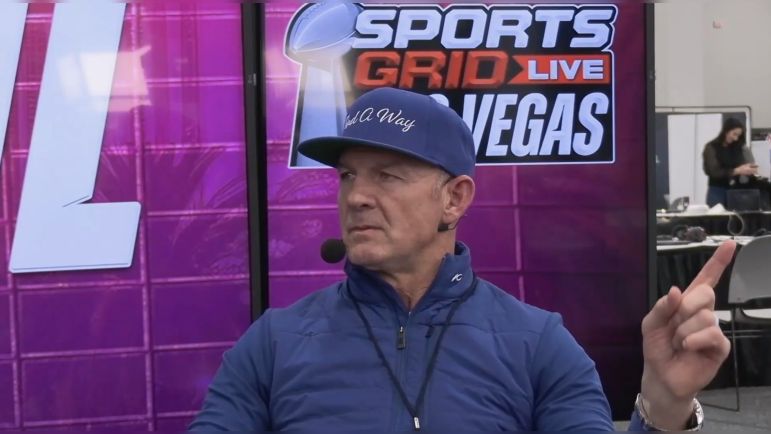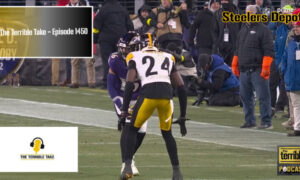Merril Hoge had a successful NFL career, a 10th-round pick from Idaho State who beat the odds and spent eight years in the league. But the sport that has given him so much also nearly ended his life. Hoge opened up about the end of his career and the events that nearly killed him.
Traded from Pittsburgh to the Chicago Bears ahead of the 1994 season, Hoge suffered a concussion in the preseason and was cleared far too quickly due to a poor doctor’s evaluation, given the “ok” five days later by a doctor over the phone. In Week 5 against Buffalo, Hoge suffered another head injury with even more serious immediate consequences.
“I went into cardiac arrest when I went into the locker room,” Hoge told The Big K Morning Show’s Larry Richert. “I fell off the table, went into cardiac arrest. They started to resuscitate me. This was told to me…I don’t remember any of this.”
The NFL has seen similar scary scenes play out in recent years. Hoge referenced Miami Dolphins QB Tua Tagovailoa in 2022, cleared too quickly by doctors and suffering two concussions in a short time frame. It left him motionless on the field and nearly caused him to retire, though he returned in 2023. Though not concussion related, Buffalo Bills S Damar Hamlin needed revived on the field later that year after taking a helmet to the chest from Cincinnati Bengals WR Tee Higgins. After months of rehab, Hamlin returned to play football this past year.
“They started to do CPR on me. I actually started breathing again,” Hoge explained. “They said I got up and walked to the ambulance. They rushed me to intensive care where I was for a couple of days.”
Hoge would tell the show the Bears didn’t have the quality medical team or care that the Steelers did. Nor did the NFL take head injuries as seriously as it does today. The mid-90s were a time where concussion research and information were in their relative infancy and the league preferred not to discuss the short- and long-term impacts of repeated head injuries. While situations like Tagovailoa’s show the league still has work to do, it has made great strides, even if that was partially due to increased media pressure and lawsuits from former players.
For Hoge, he had to start his life all over.
“I had to learn how to read again. I had lost 22 years of playing football. My whole career ends right then,” he said. “They retire me after that, they tell me I can’t play again. I went into a spiral environment. I had no hope. I had no purpose. I was as dark a space as I had ever been. At that point, I had never experienced that. I’m laying on the couch watching someone do my job.”
Fortunately, Hoge quickly found a new career. He was hired by ESPN the year after, serving as a longtime analyst post-game and during ESPN’s niche but excellent NFL Matchup. Hoge worked for the company until being laid off in 2017. He spent time with the Steelers as a scout, though no longer serves in that capacity, and has worked for the media team providing player breakdowns and tape study. He’s known for his strong opinions and willingness to go against the grain of conventional wisdom, especially when it comes to evaluating quarterbacks.
This isn’t the first time Hoge has detailed his history of head injuries and the life-threatening impact they had on him. But it’s an important story to tell and retell to highlight the seriousness of concussions and why the NFL works to reduce the number of head injuries.







